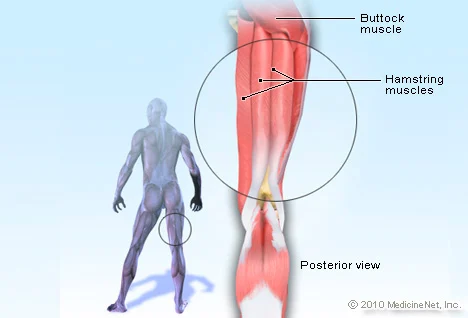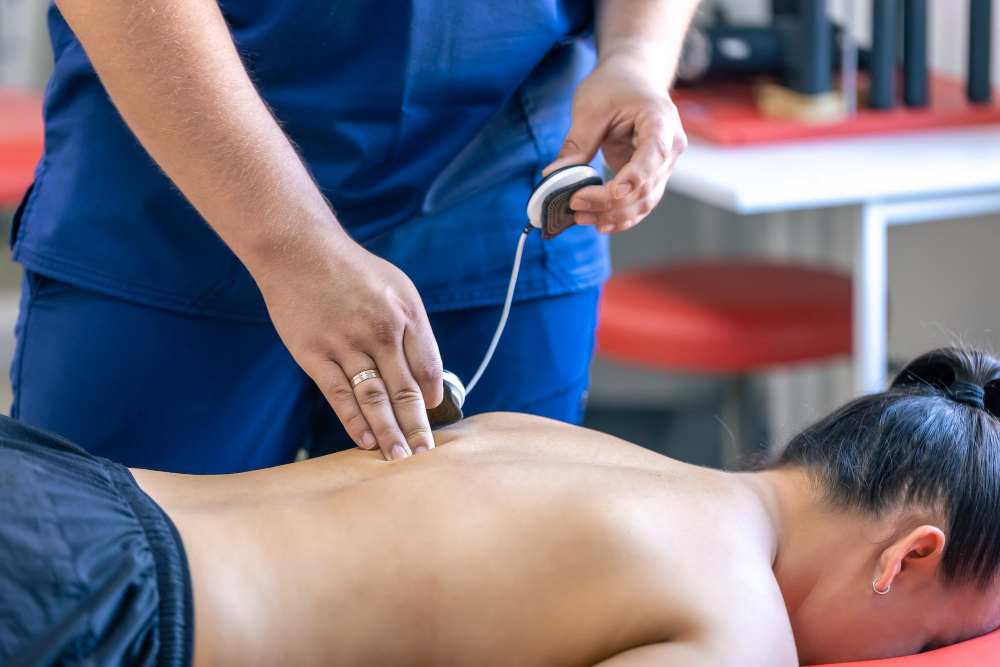Hamstring injuries happen fast and appear to come from nowhere. Images of elite athletes suffering hamstring injuries are hard to watch, but show just how suddenly the injury can occur. Derek Redmond, the 400m sprinter, running down the back straight in the 1992 Olympics, before suddenly pulling up. Clutching the back of his thigh, he went on to hobble the rest of the lap in tears. Thierry Henry, sprinting back to defend, jinking to one side, and ending up sprawled on the pitch, unable to continue.
Hamstring injuries are very sudden, very common and can happen to anyone, not just elite athletes! If you are reading this, that probably isn’t new news. Below you will find everything you need to know about hamstring injuries. What a hamstring injury is, what causes one and how you can help minimise the chance of a recurrence.
What is a hamstring strain?
Your “hamstring” is actually a set of three, long muscles, that run at the back of your thigh, from hip down to knee. If you overload or tear one of those muscles, you will feel the sensation of a sharp stabbing pain at the back of your thigh. You may even hear a popping sound.
A mild strain may not feel too painful, but a more severe one and you may find it near impossible to walk or even stand.
There are three grades of hamstring injury:
Grade 1: A mild muscle pull or strain – this might cause a sudden pain or tenderness at the back of your thigh. It may be painful to move your leg, but overall muscle strength should not be affected.
Grade 2: A partial muscle tear – this is likely to be accompanied by swelling and/or bruising, and you may lose some leg strength.
Grade 3: A complete muscle tear – there may have been a popping sound during the injury, and you will be completely unable to use the affected leg.
Whilst a grade 1 injury may only take a few weeks to recover from, grade 2 and 3 can take significantly longer. If in doubt about the severity of your injury, please consult your GP or osteopath.
What causes a hamstring strain?
The underlying cause of the strain is one of the muscles getting suddenly overloaded or overstretched, and not being able to cope. The result is a degree of muscle tearing. The most likely activity for this is sudden sprinting or jumping, with the related load and strain being placed on the muscle group. A strain can also occur during slower movements, such as excess stretching.

How do I know if I’ve strained my hamstring?
The symptoms of a hamstring strain will vary according to the severity of the muscle tear, but may include one or more of:
- Sudden pain at the back of your thigh
- Tenderness at the back of your thigh
- Swelling or bruising at the back of your thigh
- Popping noise or sensation when the injury occurred
- Impaired mobility in a leg
- Loss of strength in a leg
It is most likely that the trigger event for a tear will be during sprinting or jumping, but a strain can occur via any activity that over-stretches one or more of the three hamstring muscles.
How to successfully recover from a hamstring strain.
There are four stages to a successful, long term recovery from a hamstring strain.
1. RICE
The initial goal is to reduce pain and swelling. “Rest, Ice, Compression and Elevation” of the leg is the best thing for the first few days. Avoid the temptation to stretch the muscles, as this can make any tear worse. Use of over-the-counter anti-inflammatories can help, but use them to help reduce swelling, not to mask the pain so you can damage the muscle again. If you are concerned about the swelling or mobility issues, contact your GP or osteopath.
2. Range-Of-Movement
After the initial few days of rest, once any swelling has reduced and the pain is significantly eased, you can start to introduce some range-of-motion rehabilitation. This is a gradual process and needs to be tailored to your specific injury. A qualified osteopath or physiotherapist can help with a tailored range of exercises to ensure your fastest recovery.
3. Strength & Agility
Once you have regained sufficient range of movement, you can start to build up lost muscle strength. The aim is not just to get back to where you were, but to increase the strength of both the damaged and supporting muscles.
A classic contributor to a hamstring strain, is weak or underused glutes. Now is an excellent time to build up all the surrounding muscle groups. Pilates classes can help with both range of movement and muscle strengthening, especially for glutes and supporting muscle groups.
4. Prevent reinjury
This is really important. The chances are, you will want to go out and carry on with whatever sporting activity caused your injury in the first place! You need to take time to warm up correctly and activate the muscle groups, prior to your explosive exercise.
A few simple stretches or Pilates movements, go a long way to prevent injury. Remember to continue with your range-of-moment and strengthening exercises, even when your hamstring is a distant memory!
These four stages will take time. Depending on the initial injury, you could be looking at a few months, or even longer, to get a full recovery. Do not be tempted to rush any of the steps, your hamstring can heal itself, but you need to give it the best help and support possible.
It is very common for people to re-injure their hamstring in the early stages of recovery. Do not confuse the initial reduction in pain, swelling and bruising as a sign of a miraculous cure! Working your way methodically through the four stages above, is the best way to get back to enjoying your chosen activity in the safest possible way. Good luck!





